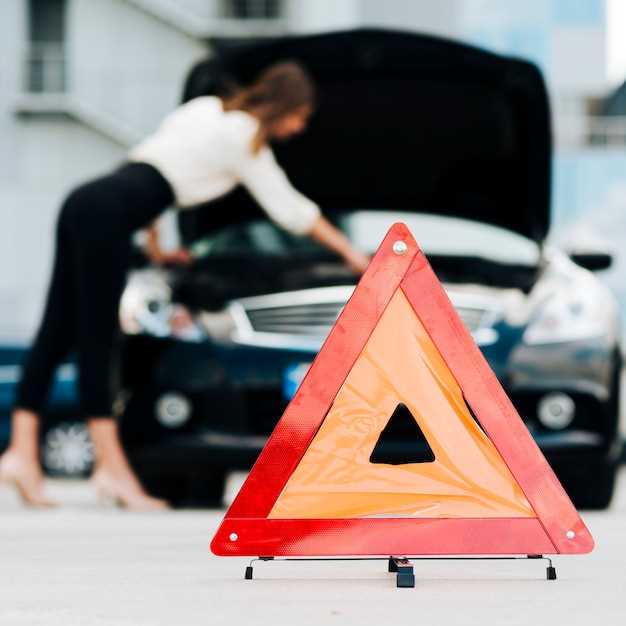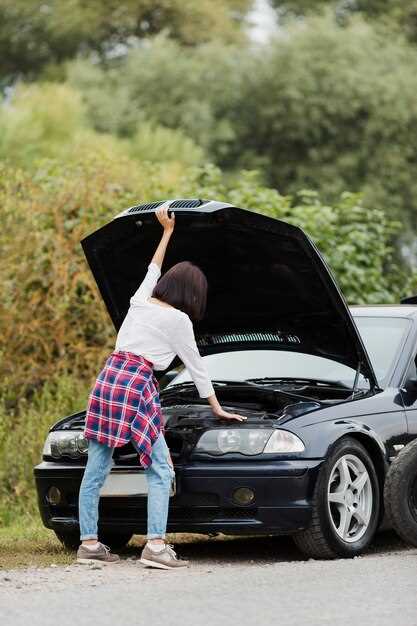
How to handle unexpected car breakdowns

Experiencing a breakdown is often an unavoidable situation for car owners. Whether it’s a flat tire, engine failure, or electrical issue, these incidents can happen at any moment, leaving drivers feeling frustrated and vulnerable. Understanding how to effectively manage these unexpected events can significantly reduce stress and ensure safety.
When faced with a car breakdown, the first step is to remain calm and assess your surroundings. If possible, steer your vehicle to a safe location away from traffic. Turning on your hazard lights alerts other drivers that you are in trouble and need assistance. This initial response is crucial for your safety and the safety of others on the road.
It’s equally important to equip yourself with knowledge and tools to handle such circumstances. Keeping a basic emergency kit in your car can make a significant difference. Items such as a spare tire, jumper cables, and a first aid kit should always be readily available. Additionally, knowing how to perform simple repairs or understanding when to call for professional help can save you time and money.
Preparation can go a long way. Regular maintenance of your vehicle helps minimize the chances of a breakdown. Familiarizing yourself with your car’s common issues and keeping up with oil changes, tire rotations, and battery checks can help prevent problems before they occur. By being proactive, you can protect both your investment and your peace of mind.
Assessing Your Situation: Safety First

When your car experiences an unexpected breakdown, the first priority is your safety and the safety of others on the road. Immediately assess your surroundings to determine if you can safely move your vehicle to a secure location. If possible, steer your car to the side of the road, away from traffic, ideally on a flat surface.
Once your car is stationary, turn on your hazard lights to alert other drivers of your emergency. This simple action can prevent further accidents and provides visibility to surrounding vehicles. If you are on a busy road, remain inside your car with your seatbelt fastened until help arrives.
Examine your environment for any potential hazards. Look for oncoming traffic, road conditions, and weather factors that may influence your safety. If you must exit your vehicle to troubleshoot or call for assistance, be cautious of nearby vehicles and stay close to your car to avoid unnecessary risks.
It’s crucial to have an emergency kit in your vehicle that includes basic supplies such as a flashlight, first aid kit, and road flares. These items can enhance your safety during a breakdown situation. Remember to stay calm, assess the situation clearly, and make decisions focused on safety first.
Communicating with Roadside Assistance Services

When you experience a car breakdown, effective communication with roadside assistance services is crucial. First, ensure that you have all necessary information at hand before calling for help. This includes your exact location, the make and model of your vehicle, and a description of the problem. Providing accurate details can speed up the response time.
Be prepared to answer questions from the roadside assistance representative. They may ask about the symptoms your car is displaying or if you have attempted any troubleshooting measures. Clear and concise answers will help them assess the situation better.
If you’re in a potentially dangerous location, such as on a busy highway, communicate this urgency to the service provider. Indicate whether your car is in a safe position or if you need immediate assistance to move to a safer area.
Keep your phone charged and accessible, as the service may need to contact you for updates. After requesting assistance, wait for confirmation about the estimated arrival time and service details. Stay alert and ready to connect with the help that arrives.
Finally, maintain a calm demeanor throughout the interaction. Roadside assistance professionals are trained to handle various situations, but your clear communication can significantly enhance their ability to assist you efficiently during a stressful car breakdown.
Preparing for Future Breakdowns: Essential Supplies
Experiencing a car breakdown can be stressful, but being prepared can ease the situation significantly. To enhance your emergency preparedness, keep the following essential supplies in your vehicle.
1. Emergency Kit
Your emergency kit should include basic tools like a flashlight, jumper cables, tire pressure gauge, and wrenches. Incorporating a first aid kit is also crucial for addressing minor injuries until professional help arrives.
2. Spare Tire and Jack
Always have a spare tire that is in good condition, along with a jack and a wrench. This allows you to replace a flat tire quickly and safely. Regularly check the air pressure of your spare tire to ensure it is ready when needed.
3. Non-Perishable Food and Water
In case you find yourself stranded for an extended period, having non-perishable snacks and bottled water can keep your energy levels up. Granola bars and dried fruits are great options.
4. Emergency Blanket
An emergency blanket is lightweight and compact, providing warmth if you are stuck in cold weather. It helps retain body heat and can make a significant difference during long waits for assistance.
5. Warning Triangles and Reflective Vest
To ensure your safety on the road, carry warning triangles or flares to alert other drivers of your stationary vehicle. A reflective vest makes you more visible when you exit your car, especially at night.
6. Cell Phone Charger
A car charger for your phone is essential. In emergencies, your phone can be your lifeline for calling for help or navigating to safety, making a reliable power source crucial.
7. Fire Extinguisher
A compact fire extinguisher rated for automotive use can be a lifesaver in the event of a fire. Ensure it is easily accessible and check the expiration date regularly.
Keeping these essential supplies in your car will prepare you for unexpected emergencies, making breakdowns less daunting and helping you manage the situation effectively.